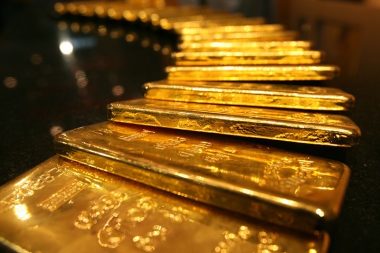 The strategic role of gold in the portfolio of Singapore-based investors.
The strategic role of gold in the portfolio of Singapore-based investors.
Singapore is home to a wide range of cultures, religions and ethnicities but its diversity is not limited to its people. Attracted by the city-state’s pro-business environment and highly skilled workforce, asset managers and investors from around the world have come to regard Singapore as the gateway to ASEAN and the Asia Pacific.
According to the Monetary Authority of Singapore’s 2020 Asset Management Survey, 78% of the funds managed in Singapore were sourced from outside the country. Of the funds managed, 68% were invested in Asia Pacific, while ASEAN countries also remained key investment destinations, making up 33% of the investments in APAC.
In EM Asian countries where there is a high affinity for gold as jewelry and investment, economic growth is a key driver of gold demand. In India, our analysis shows that for every 1% increase in income, gold demand is expected to increase by 0.9%.2 Likewise in China, gold consumption is closely linked to local economic performance and the 8.1% y-o-y GDP growth in 2021 was seen as key in supporting the 55% y-o-y rise in Chinese gold consumption.
ASEAN investments similarly have tremendous potential for growth due to demographic and economic trends and play an important role in asset allocation as a source of return. However, these investments usually carry risks and come with higher volatility. Gold’s link to rising income means that it can capture ASEAN’s growth upside without the accompany risk and volatility and thus improve portfolio performance.
In a portfolio that is heavily weighted towards EM risk assets, gold’s role as a safe haven is particularly pronounced. EM equities have a beta of 1.14 versus the MSCI World Index,4 and systemic risks that impact global economies can have a larger effect on emerging markets.
In addition, many EM economies are also exposed to risk stemming from domestic political instability and EM Asia is no different.
Gold is devoid of the political risks embedded in EM assets and can protect the portfolio from depreciating local currencies, as well as offset the decline in risk assets during periods of instability. But gold’s correlation does not just work for investors during periods of turmoil. It can also deliver positive correlation with equities and other risk assets in positive markets, making gold a well-rounded efficient hedge with high efficacy and low cost.
Gold has a negative correlation to global equities during a selloff but a positive correlation when they advance.
Gold’s dual nature as both a defensive and growth asset has allowed it to generate long-term positive returns in both good and bad economic times. Looking back almost half a century, the price of gold in US dollars has increased by an average of nearly 11% per year since 1971 when the gold standard collapsed.6 In the last two decades gold has outperformed both the MSCI ASEAN and APAC indices and lags only Thailand’s SET index and Indonesia’s Jakarta composite index in ASEAN .
This duality reflects the diverse sources of demand for gold and differentiates it from other investment assets. Gold is often used as a safe-haven asset but is in demand via the jewellery market and is a key component in electronics. These diverse sources of demand give gold a particular resilience: the potential to deliver solid returns in various market conditions.
